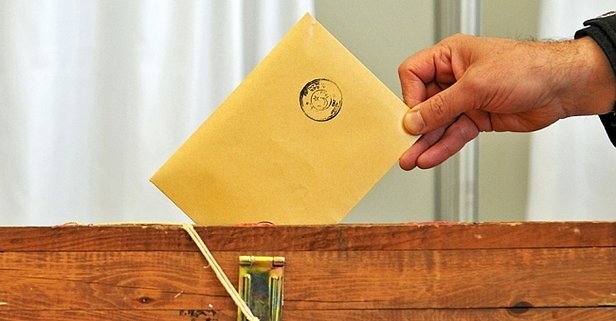A Headscarf Affair, a Women’s Affair?

In Turkey, the battle in the public sphere continues among groups with different interpretations of secularism, but also among women themselves. As the most visible symbol of Islamization for the last three decades, the headscarf has been considered a threat to secularism and gender equality, two values that are cherished by those who are devoted to the heritage of Ataturk’s republican modernity.
The gendered dimension of secularism is an intrinsic feature of Turkish modernization. Turkish “laicite” (inspired from the French one) meant a strong will of the republican state to endorse a public sphere where religion will be absent, but women present. The reforms, whether they were providing legal rights (with the abolition of the sharia law and the adoption of a civil family code), political rights (women’s vote and eligibility), or educational rights (co-education of girls and boys), all underpinned the republican coupling of secularism and women’s rights.
Change of paradigm
Since the Republic, women were markers of a secular public sphere and a “modern way of life” (read also “western”). The headscarf confounds the established imaginaries of modern, secular and feminist. The headscarf conflates in a single symbol both personal piousness and public assertion of Islamic difference. It is difficult to distinguish religious from cultural and political meanings. Those who argue against the headscarf make distinctions between “good” Muslims exhibiting “authentic” belief and others who exploit its “political” symbolism.
The headscarf of the peasant, the working-class woman or the grandmother is considered traditional or pious and is therefore acceptable. The young woman’s headscarf (called the “turban”) provokes, on the contrary, powerful emotions, anger and aversion to the extent that the temporal (religion as a relic from the past) and spatial (religion at the margins) separations and class distinctions between secular and religious disappear.
Muslim women’s access to higher education also challenges the idea that secularism equals modernity. Women who are proponents of the headscarf distance themselves from secular models of feminist emancipation, but also seek autonomy from male interpretations of Islamic precepts. They represent a rupture of the frame both of secular female self-definitions and religious male prescriptions. They want to have access to secular education, follow new life trajectories that are not in conformity with traditional gender roles, and yet fashion and assert a new pious self. They are searching for ways to become Muslim and modern at the same time, transforming both.
The headscarf – a sign of empowerment?
The established past meanings of the symbol of Islamic veiling are undergoing a transformation: from the submission of Muslim women who are secluded in the private sphere to assertive, and public, Muslim women. The veiling, from a sign of stigma and inferiority, is in the process of being transformed into a sign of empowerment and the prestige of Muslim women. It is certainly a challenge to secular conceptions of female emancipation, but also to male Islam, which identifies the veil with submission to their authority.

The public demonstrations against the bill, which were initiated by women’s organizations, have shown the other female face of this debate – that of Turkish secularism. The form of secularism that has been implemented as a principle of the republican state has often been considered a “top down” ideology, foreign in its roots (inspired by French “laicite”) and believed destined to disappear if not backed up by the army’s power. In the last decade, we have seen that secularism was an indigenous value, defended by women’s societal organizations, going from state-politics to street-politics.
This has been made particularly clear by the public demonstrations that have gathered millions and have spread from one city to another, including those during the summer of 2007 that mobilized against the presidential candidacy of Abdullah Gul because of his Muslim background and his covered wife. Despite this evidence of civil society’s support for secularism, however, the flags and the nationalist slogans that were widely used in these demonstrations have also revealed the state-oriented and nationalist feature of Turkish secularism.
“Democratic” and “not-so-democratic” secularists
The debate over the headscarf is putting secularism to a democratic test; exposing disagreements between liberal and authoritarian secularists. While the hard-liner secularists make a claim for the restoration of order (if necessary with military power) the liberals address a critique to secular militarism and republican nationalism. They take aim at the expansion of democratic rights and freedom of expression.
They have given their support to the previous democratic reforms engaged by the government within the context of Turkish membership to European Union. The new legislation deceived those who were expecting a package of laws – for example by eliminating the law against “insulting Turkishness” – that would have broadened the constitutional changes for freedom of expression.
An escalation of Muslim claims?
The new legislation is not based upon religious arguments, but, on the contrary, on arguments against discrimination, for equal access to higher education, and furthermore, in conformity with the European norms and freedom of dress codes. But overall, it could not overcome the politics of fear and suspicion. The end of the ban is feared to provide a first step that will pave the way for the escalation of Muslim claims and the spread of the headscarf in places other than the universities, such as in the public schools, in Parliament, and among public servants and professionals.
Secondly, it is feared that the headscarf will not only acquire legitimacy but also will be used to enforce conservative Islam upon others, especially on “unveiled” students in Anatolian universities. The fear is that once the secularists are in a minority-position, not only will women’s rights cease to be respected, but they will be intimidated and oppressed by the rising tide of conservative gender roles and Islam.
The “daughters” of Ataturk are worried for the freedom of their own daughters. Many secularists therefore fear the intentions of the AK Party – the Party of Justice and Development that acquired a majority vote in the last general elections – suspicious they have a hidden agenda to promote a conservative religious culture.
Overcoming the politics of fear
None of these arguments can be dismissed, particularly in light of the strength of political Islam and its compulsory practices in neighbouring countries. However, history is not about social engineering, and the force of democracy is to open up the possibilities for the future and to enhance action and interaction among competing, contending forces of diversity. But sustainability of democracy requires overcoming politics of fear and suspicion, including those among women.
Today, women are part of the forces of pluralism; their subjectivities and agencies, both secular and religious, are affecting political dynamics in Turkey.
What we learn from Turkey is that the tensions between secularism and Islam are unfolding in the realm of everyday life and gender politics. Matters of Islam and secularism are not only matters of the state and male politics, but are also becoming foremost a women’s affair. We can hope that assuring women’s public presence and liberty in this game will be a guarantee for pluralism and diversity.
Nilüfer Göle
Source: Qantara



